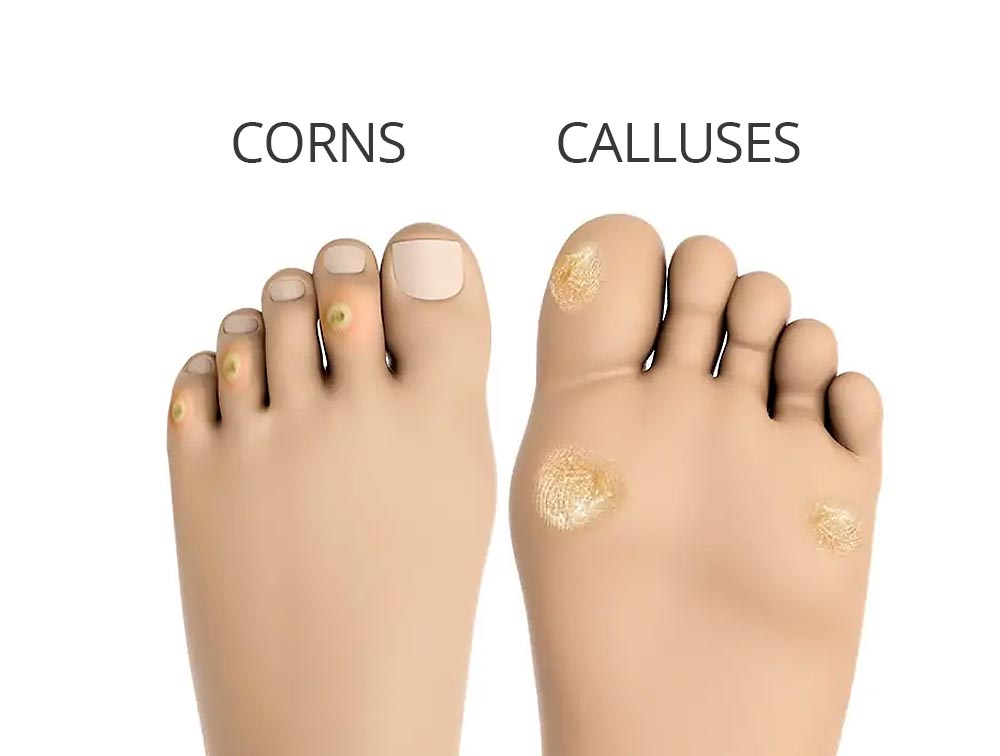Dr. Sheldon Simon Can Help with Your Corn or Callus Treatment
Corns and calluses are a thickening of skin that is your body’s way of providing protection from friction or pressure. The most common place that calluses develop is on the ball of the foot. Corns, on the other hand, are most found on top of or between the toes. When the corn or callus becomes too thickened, increased pain and redness may result.
Causes of Corns & Calluses
Typically, the normal foot can carry a person’s weight comfortably. Structural changes of your feet and especially in the toes and the ball of the foot, can cause increased pressure and friction when standing or walking. The increase in pressure or friction will produce irritation of tissue that reacts by thickness of the skin. Over time, the ligaments and bones under the skin will become damaged by the increase in pressure or friction producing a functional deformity. Additionally, as we age, we may lose the protective fat pad in the ball of the foot which with increased pressure makes the callus condition worse.
Corns between the toes are called “soft corns” because they retain moisture and do not get hard. Sometimes a small, inflamed, painful reddish pouch may develop. This pouch is known as a bursa and complicates the presence of a corn.
Treatment for Corns & Calluses
Treatment options for corns and calluses depend on the symptoms presented and associated foot instability. When corns and calluses are causing only mild discomfort gently using a pumice stone to thin any corns or calluses may provide some relief from symptoms. Never use a medicated corn pad or corn-removing product since these contain a strong acid that could lead to a chemical burn. Another simple solution is to try wider, more comfortable shoes with adequate room for the toes to move or insoles for support and cushion. Shoe types include lower heels, softer leather, wider toe boxes, or even gym shoes. Surgical options are recommended when conversative solutions fail to provide relief. When these treatment options are no longer providing the comfort you need, we advise a consultation with your Podiatrist to discuss surgical options.

